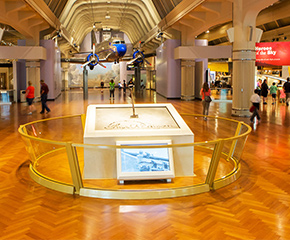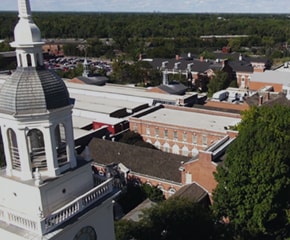First Portable Superheterodyne Radio Receiver, Made by Edwin Howard Armstrong, 1923
Add to SetSummary
Edwin H. Armstrong was a pioneer of radio engineering, credited as the inventor of FM radio. In 1918 he filed a patent for the superheterodyne radio circuit. This technology increased the sensitivity and selectivity of radio receivers. The radio depicted is the first portable superheterodyne radio receiver ever made. Armstrong gave it to his wife, Marion, on their 1923 honeymoon.
Edwin H. Armstrong was a pioneer of radio engineering, credited as the inventor of FM radio. In 1918 he filed a patent for the superheterodyne radio circuit. This technology increased the sensitivity and selectivity of radio receivers. The radio depicted is the first portable superheterodyne radio receiver ever made. Armstrong gave it to his wife, Marion, on their 1923 honeymoon.
Artifact
Radio receiver
Date Made
1923
Keywords
Location
Not on exhibit to the public.
Object ID
67.52.1
Credit
From the Collections of The Henry Ford. Gift of Marion Armstrong.
Material
Bakelite (TM)
Batting
Glass (Material)
Leather
Rubber (Material)
Textile fabrics
Wood (Plant material)
Dimensions
Height: 16 in
Width: 7.5 in
Length: 25.5 in
Diameter: 12 in (horn)





